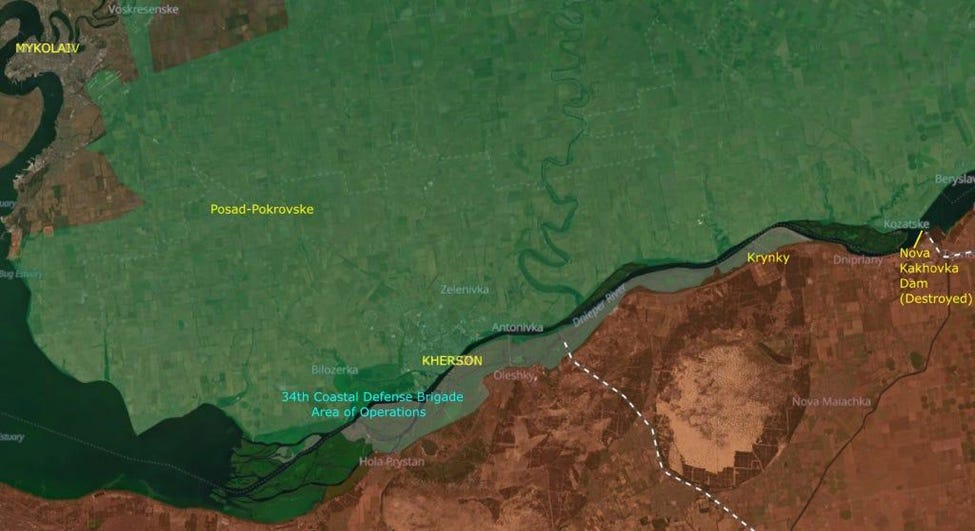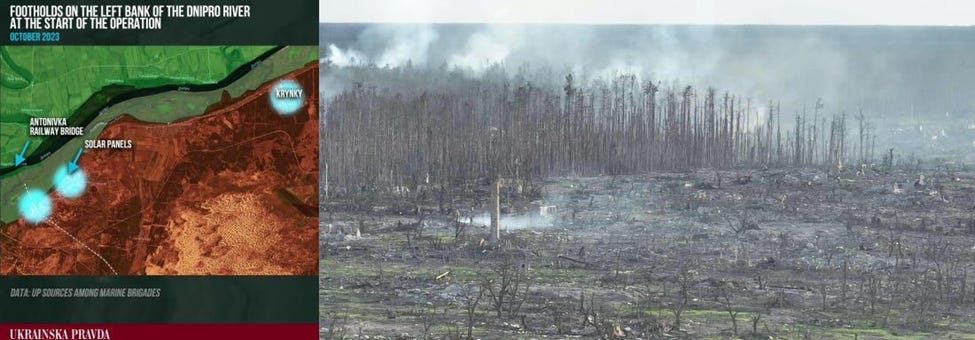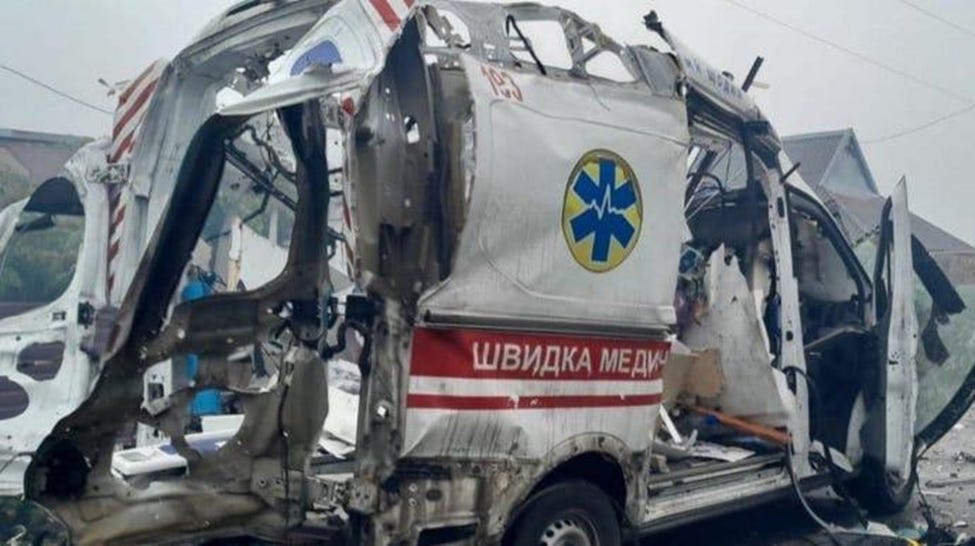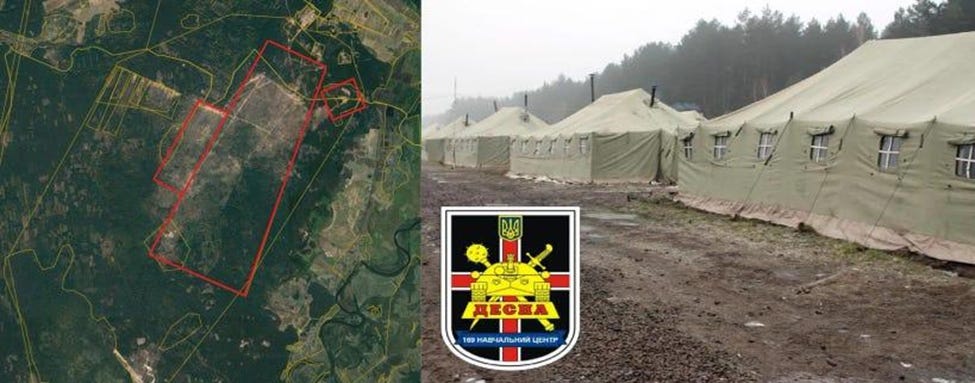Kherson
For quite a long time, Russian troops have been trying to seize islands in the Dniepro river and suffered casualties doing so. Drones and other sensors monitor the river for both sides. Any boat crossing could be subject to a drone attack. Most of the islands are swamps. It is impossible to dig defensive positions on the dry land because the soil collapses in a trench, or the water table causes flooding, or both. The houses that were on some islands are in some level of destruction. They were all under water for a couple of weeks after the Nova Kakhovka dam was destroyed. If they had a basement, it was full of mold. Any transportation of supplies or replacements by boat risks being attacked by drones. With little cover and constant surveillance, soldiers on islands are often attacked by drones and artillery. It was so bad that Russians were reported to be destroying their boats back in December.
Island operations were so bad for the Russians that a new Ukrainian brigade commander decided to replicate the operations.
Joe McDonald was a British Marine that fought for Ukraine in 2023 and has taken part in island assaults. He now reports and fundraises. He says that a 27-year-old officer that fought at Krynky and rose through the ranks was appointed to command the 34th Coastal Defense Brigade. Listed as Col. Oleksandr Mostovyi in the MilitaryLand database, he is trying to seize the same islands that were killing Russians and McDonald says that 30-40 Ukrainian soldiers have been killed pointlessly in the last six weeks. He also said a UAV battalion commander was arrested for throwing acid on a journalist’s face when he didn’t like the reporting.
A Ukrainian soldier, Stanislav “Osman” Bunyatov, said that the new commander didn’t look at what the brigade did over the previous months and years and decided the unit had done nothing for two years. So, without any understanding of what his unit has done, he is trying to take the islands for no particular purpose and 90% of the people sent do not return. He is concerned that the brigade is being worn down to zero and that if the situation does not change, Russia will land on the right bank. Soldiers are at their breaking point and he asks that the commander be removed and replaced by someone that has been fighting with the brigade for the last three years instead of replacing him with another negative and ambitious fool.

After the liberation of Kherson in November 2022, Ukraine tried to open a front on the left bank of the Dnieper with a series of raids and crossings. They planned a major crossing for the summer of 2023 but that had to be postponed when the Russians blew the dam in June. New marine brigades were involved in the summer offensive to gain experience. Russian paratroopers, marines and other decent units were sent to reinforce Zaporizhzhia and Donetsk, leaving weaker troops to defend the river. In September 2023, Marines involved in the fighting near Velyka Novosilka were withdrawn to Mykolaiv and Kherson.
Other small crossings and raids had been conducted, but the Ukrainian Marines landed at Krynky and two other locations as a major operation in October 2023. The primary task was to open a second front and draw Russian troops from Robotyne, but the Russians didn’t have a second line of defense, so if they broke through the first line they were tasked with moving to Crimea. The plan was to secure a 30 km stretch of land from the Antonivka Railway Bridge near Kherson to Krynky and move 5-7 km inland in 3-4 days. Having been exhausted by the fighting at Velyka Novosilka, and marching on foot without heavy equipment, the troops involved felt they might be able to accomplish those tasks with 9-12 brigades, but only three brigades would be crossing with a fourth brigade being held in reserve.
The commander of the Marine Corps at the time, General Sodol, said that, “HIMARS will fire like machine guns!”, but the artillery support was minimal, as most of the ammo was being used in Zaporizhzhia, and it was very difficult to supply three brigades when under attack from Iskander missiles, airstrikes and tanks. The Krynky site had the most personnel and therefore the most secured land, so the other two brigades were withdrawn from their untenable terrain and consolidated at Krynky. Still, replenishment of men and supplies was very difficult. Crossing the two kilometers of swamp to reach Krynky under fire could take hours or a full day. There was a shortage of both boats and jamming equipment. They knew even back then that they couldn’t fortify or hold the islands.

The situation really became bad in December when Russia started hitting the supply routes with artillery and waiting with drones for boats. Ukraine started running out of boats. Some soldiers were dropped life jackets and told to swim across the river. One soldier said they could have withdrawn during the spring when it was often foggy and that would have saved a lot of lives, but they waited until July 2024. A month later, Ukraine invaded Kursk.
Ukraine did destroy a lot of Russian soldiers and equipment in Krynky, and Russian reinforcements were sent from other fronts. Most of the Russian losses were from Ukrainian artillery and drone strikes. After the first two months, there were few close-ranged firefights. But one Ukrainian brigade lost about 700 killed and wounded, and 788 soldiers went missing during the operation.
Ukraine has been conducting river operations for three years now. Russia, with its Soviet mentality, continues to try and occupy the islands in the river and continue to die there. Russian occupation of the islands is not a threat and the attrition of their forces in these operations benefits Ukraine. Ukraine should only be conducting operations that improves their position in the war without paying a terrible price in losses. Russian attempts to occupy and die on the islands does not improve Russia’s position in the war. Ukraine should stop acting like Russia.

***
Crimea
In Russia-occupied Sevastopol, an electronics factory was set on fire. Radars in Feodosia were attacked (both by Ukrainian UAVs and missiles).
Ukraine conducted a raid on the exposed Tendrivska Spit and destroyed a jamming complex and radar station without losing any personnel.
Back on 27 February 2022, Russia took control of the Chornobaivka airport outside Kherson and Ukraine used Bayraktar drones to attack them and destroyed some BUK SAM systems. Another Buk system was destroyed on March 2nd, and then 30 helicopters were destroyed on March 7th. There was another attack on March 15th, and then 7-15 helicopters were destroyed on March 16th. The Russians continued to bring equipment and helicopters to the airport and it was bombarded for a seventh time on March 21st. Only then did they withdraw most of their helicopters from the airport. The ground forces continued to be attacked until Russia finally withdrew from Kherson in November. Here’s seven minutes of video showing the destruction that accumulated over nine months. They never dispersed despite the repeated attacks on Chornobaikva.
For Moscow, its military bases in Crimea have been a source of power projection into the Black Sea. In order to attack the naval and air assets there, the air defense systems had to be overcome, presumably with missiles and aircraft. Russian air defenses were built to intercept missiles and aircraft, but Ukraine started to heavily rely on drones.
Most Russian anti-aircraft regiments use the 92N2E radar, which does not track small objects well. The 91N6E radars do, but they have very few of them, so they tried to fill the void with Nebo-M and Kasta-2E2 radars from Crimea. These were quickly destroyed, so more radars were transferred from other areas. And when they were destroyed, more were transferred in, leading to greater gaps of air defense coverage in Russia: ‘but’, even Russia has no endless supply of such systems.
Crimea is a difficult place to defend because there are only so many places to be located, and there is a limited way to get into and out of it. Persistent surveillance and partisans are regularly tracking the location of Russian equipment, and the radars are only effective when they’re turned on, which provide the location of the radars. Ukrainian drones fly into Crimea from both the north and from the sea on naval drones. Two years ago, they even landed troops in a raid on Olenivka and Mayak.
Crimea is not good terrain from which to fight against drones but Russia still has to defend it because of the logistical hubs and air bases, and because Ukrainian drones also fly across Crimea to engage targets in the naval base of Novorossiysk and targets south of it. Air defenses in Crimea act as a screening force that Ukrainian drones have to penetrate to reach southern Russian targets, much like Ukraine uses small naval craft with anti-aircraft missiles to screen Odesa from attacking drones and missiles. Screens allow a force to detect aerial threats and provide a longer time to engage the threats. If Russia pulled all of its air defenses from Crimea, then Ukrainian aircraft would be free to operate and enemy air superiority never ends well for a defending force.
Russia loses 25 to 35 air defense systems each month and over a third of those losses happen on the Crimean peninsula. They cannot replace these losses through production so they have to move around air defense systems. The loss of so many systems means the gaps in the air defenses are increasing. The raid on Tendrivska Spit was supported by a Bayraktar drone, which is never used in locations with air defenses, so we know the radars and jammers that were located on the Spit had no air defense coverage.
Russian air defenses in Crimea cannot withdraw and they cannot survive. It has become another Chornobaivka.
***
Baltic Sea
The Russian navy conducted an exercise in the Baltic Sea and a German signals intelligence ship monitored them visually and recorded their communications, radar frequencies and radio-controlled weapons. Russia used naval drones to sink a mock ship. The Russians contacted the German ship to let them know they were in an area designated for live fire exercises.
***
Occupied Territories
Partisans in Melitopol destroyed an electronic warfare system, killed five Russians and wounded two more with one explosion.
***
Unknown Location
In an older video, a Russian soldier in a forest avoids being detected by a Ukrainian drone and then runs to locate and break the fiber optic cable, causing it to crash. Roads are good terrain to find the cable and some bring tools for the job.
A Ukrainian soldier and his three companions were attacked by drones with gas and fire. They were killed and he had a leg injury. It was too dangerous to come rescue him and he couldn’t walk the 1500 meters to get to friendly lines. Twice, they tried to drop an electric bike with drones. One was shot down and the other malfunctioned. The third time succeeded. He rode 400 meters on his good leg before hitting a mine and being tossed into the air. He limped for 200 meters before another electric bike was delivered. He then drove 15 minutes to safety.
***
Attacks on Ukrainian Training Camps
On March 1st, a Russian attack on a training center in Cherkasy, about 260 km from the front. The number of casualties wasn't released but a “large number” of wounded arrived at a hospital. It is very likely that some soldiers were killed. Drapaty promised to hold leaders responsible and Syrskyi fired some commanders pending a criminal investigation. On May 20th, six were killed and ten wounded in a strike on a training camp somewhere in Sumy, so no more than 100 km from the front. The commander was suspended and an official investigation launched. On June 1st, a missile strike on a training site left 12 dead and 60 injured and Drapatyi resigned because no one was listening to him. The location of the site wasn’t disclosed but it was 100 km from the front. Syrskyi issued a “nonnegotiable demand” that shelters be built at training sites instead of tent camps and that no one gather in large groups. On June 4th, another training camp was hit 100 km from the front. Soldiers were dispersed and in shelters at the time of the attack. No one was killed and “some” personnel were wounded. On July 30th, a training site in Chernihiv, 70 km from the front was hit with two missiles last week killing three and wounding 18. The Ukrainian ground forces command expressed their sincere condolences to the relatives and friends of the deceased and promised to investigate the actions or inactions of officials and hold them accountable.
Four of the five attacks were on training camps located between 70-100 km. Since the camps are a fixed position, finding them is just a matter of time through satellite imagery, surveillance drones or espionage. In order to determine when to attack a group of people, surveillance drones or espionage is needed, and drones are a more likely option. There was also an attack on a training facility about 260 km from the front. The further away a training facility is from the front, the less likely it will be attacked. Locations that are 5-800 km away would be safer than 100 km away.
One of the responsibilities of a commander is to inspect the troops to make sure they’re doing what they are supposed to be doing. If the commander cannot personally inspect the sites then he must appoint someone to do so and report back to him. The responsibility of proper conduct at the training sites is not just the commander of the training site, it is also the responsibility of his entire chain of command. If a training site commander failed in his responsibilities then replacing him is an option. If troops and vehicles are still gathering in large groups, then the chain of command should be aware of it so they can correct the behavior before a Russian attack. If tents are still being used instead of shelters, then the chain of command should be aware of it before a Russian attack. Drapaty understood responsibility. Syrskyi is responsible for the actions of his subordinates and their repeated and systemic violations of common sense. And ultimately, Zelensky is responsible for Syrskyi. But, with Zelensky letting Syrskyi do as he likes, regardless of all of his failures, Syrskyi needs not to care about consequences of his failures.

***
(…to be continued in the Part 4…)
This text is published with the permission of the author. First published here.